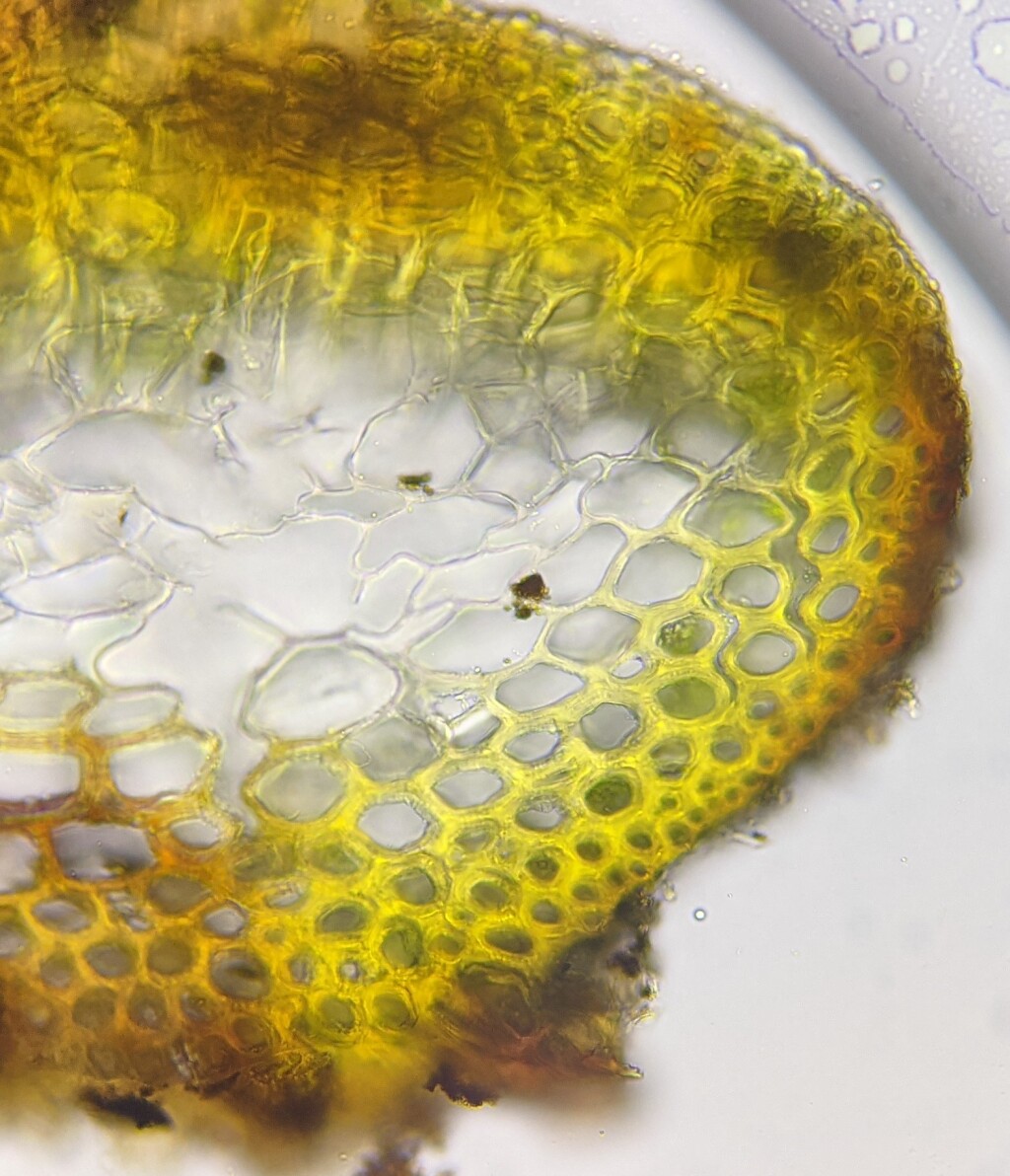Drepanocladus
Dioicous or occasionally autoicous. Asexual propagules absent. Mats or tufts on soil, usually aquatic. Stems creeping or crowded and ascending to erect, sparingly and irregularly to subpinnately branched ± in one plane, with sparse rhizoids at or just below leaf insertions; paraphyllia absent; pseudoparaphyllia foliose, triangular to broadly ovate; central strand present. Branch leaves smaller than stem leaves, otherwise similar, ovate to lanceolate, straight and erect to squarrose, or falcate-secund when moist or dry, not or decurrent (not in Victoria), not plicate; apex acuminate and sometimes reflexed, or obtuse (not in Victoria), apiculate (not in Victoria) or rounded (not in Victoria); costa single, extending to around mid-leaf to excurrent, or double and short; margin entire, plane or inrolled, without a border; laminal cells oblong-rhomboid to linear, smooth, unistratose; alar cells clearly or indistinctly differentiated, quadrate to rectangular, inflated or not (not in Victoria), hyaline to yellowish, forming a transversely triangular to ovate-triangular group that extends half way to costa to all the way to costa or sometimes in a single basal row (not in Victoria). Capsule inclined to horizontal, curved, cylindric, with a persistent or caducous annulus. Calyptra cucullate, smooth, glabrous. Operculum rostrate. Peristome double; endostome processes same height as exostome teeth, with a high basal membrane; cilia present.
Widespread throughout cooler regions of the world and at high altitude throughout tropical regions, with 16 species; four species in Victoria.
 Spinning
Spinning


